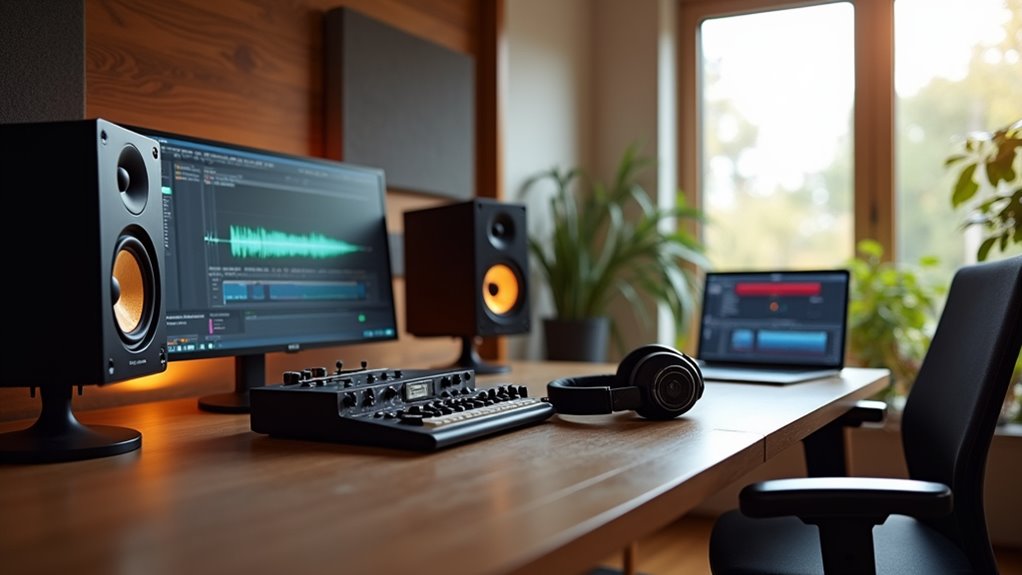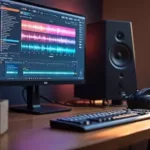
3 Audiophile gear that every music lover should own
Master the art of sound with three must-have audiophile gear pieces that elevate your music experience to unparalleled heights.

High-quality streaming audio can completely change the way you experience music and media. But not all streams are created equal, and the difference often comes down to details most listeners overlook. Once you know what truly affects sound clarity, you’ll never settle for less. The question is: are you really hearing your favorite tracks at their best?

Audio quality in streaming depends a lot on bitrate, which is the amount of data sent every second. A higher bitrate means better audio quality because it keeps all the sound details clear and sharp.
But keep in mind, higher bitrates need more internet bandwidth, which can sometimes cause playback issues. Finding the right balance between bitrate and your network speed is key to getting the best streaming audio quality without using too much data or facing interruptions.
When comparing popular streaming platforms, audio quality is a key factor that sets each service apart.
The audio quality on streaming platforms varies a lot because of different bitrate options, compression techniques, and streaming protocols. For example, platforms like Tidal and Qobuz are known for offering high-resolution audio quality, while Spotify and Apple Music focus on efficient compression at lower bitrates.
Choosing the best streaming platform for audio quality also depends on your personal preferences and the devices you use.
When it comes to streaming, picking the right audio codec is key to getting the best sound experience. The right audio codec affects audio quality, compression efficiency, and how well it works with different devices.
Popular audio codecs like AAC and Opus offer a great balance between sound fidelity and bandwidth use. This makes them perfect for a variety of streaming environments.
To choose the best audio codec, it’s important to understand your audience’s devices and network conditions. This way, the chosen audio codec can deliver consistent, high-quality audio without using too much data.
Improving your internet connection is key to enjoying smooth and reliable streaming. One of the best ways to boost your internet connection is by using a wired Ethernet connection instead of Wi-Fi, as this reduces interference and lowers latency.
To keep your internet connection running at its best, make sure to close any bandwidth-heavy applications that might be slowing down your speed. Regularly updating your router firmware is another simple step that ensures your internet connection stays fast and stable.
Positioning your router in a central location can also improve signal strength and minimize obstacles.
Finally, testing your internet connection speed often helps you spot issues early and make adjustments, so you can always enjoy high-quality streaming without interruptions.
For audiophiles looking to enhance their streaming experience, having the right streaming equipment is key.
Essential streaming equipment includes a high-resolution digital-to-analog converter (DAC), quality headphones or speakers, and a reliable streaming device that supports lossless audio formats.
Using proper cabling and a dedicated audio interface also helps maintain the best sound quality.
When it comes to configuring playback settings for the best sound, paying attention to the details really makes a difference. To get the best sound, start by adjusting the sample rate and a bit depth to match your source files, this helps keep the audio quality intact.
Another key tip for configuring playback settings for the best sound is to enable lossless streaming formats, which ensures you get minimal compression and clearer audio.
Don’t forget to disable any audio enhancements that might add unwanted effects or color to your music. Proper volume leveling is also crucial to avoid distortion, and always select the correct output devices to maintain signal integrity.
Digital-to-Analog Converters, or DACs, play an essential role in delivering clear and crisp sound from digital audio files.
Even though digital audio files contain precise data, the magic happens when DACs convert this digital information into analog signals that your speakers can understand.
High-quality DACs are key to reducing distortion and maintaining excellent audio fidelity, ensuring you get the best listening experience.
Whether you’re streaming music or enjoying AI-powered audio applications, reliable DACs make all the difference in producing true-to-source sound.
If you want superior sound clarity, investing in good DACs is a smart choice every tech enthusiast should consider.
Exploring lossless and hi-res audio streaming options is a must for anyone who loves crystal-clear sound quality.
Lossless audio formats like FLAC keep all the original music data intact, giving you the purest listening experience. Hi-res audio streaming takes it a step further by offering higher sampling rates and bit depths, which means you hear more detail and clarity in every track.
Popular services such as Tidal, Qobuz, and Amazon Music HD specialize in lossless and hi-res audio streaming, making it easy to enjoy superior sound right from your devices.
If you’re serious about audio quality, exploring lossless and hi-res audio streaming options will definitely upgrade your music experience.
Managing data usage without sacrificing quality is all about smart choices.
When you want to enjoy high-quality audio streaming, managing data usage without sacrificing quality ensures you get the best sound without using too much bandwidth.
Using adaptive streaming technologies and picking the right bitrates are great ways to balance clear audio and data control.
Plus, downloading your favorite tracks for offline listening helps reduce streaming data.
Enhancing your listening environment is key to enjoying the best streaming audio experience. By creating the perfect listening environment, you can significantly improve the clarity and quality of your streamed audio.
Start by minimizing background noise and using quality headphones or speakers designed for streaming audio. Properly positioning your equipment and adding sound-absorbing materials will reduce echo and boost sound clarity.
Also, adjusting volume levels to prevent distortion ensures you get the most out of your streaming audio. With these simple steps, your listening environment will let you enjoy streaming audio exactly as content creators intended.
Achieving high-quality streaming audio is easier than you think when you understand the key factors involved. To enjoy the best streaming audio, start by choosing the right platform and codec that fit your needs. High-quality streaming audio also depends on a stable internet connection and investing in good equipment like DACs. By learning about bitrates and audio formats, you can optimize your streaming audio experience without using too much data. With these tips, you’ll be able to enjoy rich, immersive sound that makes your streaming audio truly stand out.

Master the art of sound with three must-have audiophile gear pieces that elevate your music experience to unparalleled heights.

Power up your home with three smart speakers that simplify daily routines—discover their unique features and find out which one suits you best.

Why settle for less when these 6 gaming headsets can elevate your gameplay with unmatched sound quality and comfort? Discover which one fits you best.

Powerful yet user-friendly, these 3 best audio editing software for creators in 2025 offer unique features to elevate your sound—but which one suits you best?

Immerse yourself in unparalleled audio quality with these top 3 surround sound systems—discover which one transforms your space into a cinematic haven.

Unlock unbeatable sound quality and durability with the top 4 portable speakers for travel and outdoor adventures—discover which one suits your journey best.